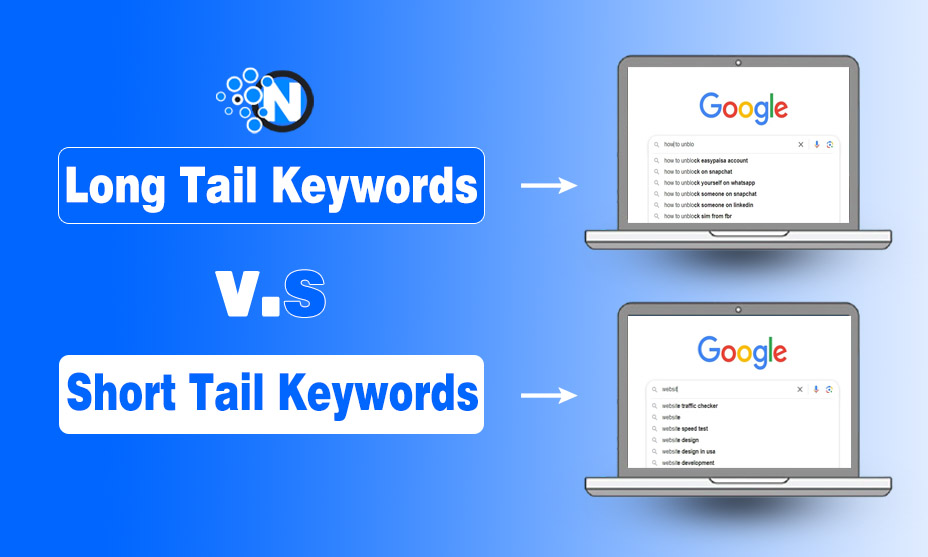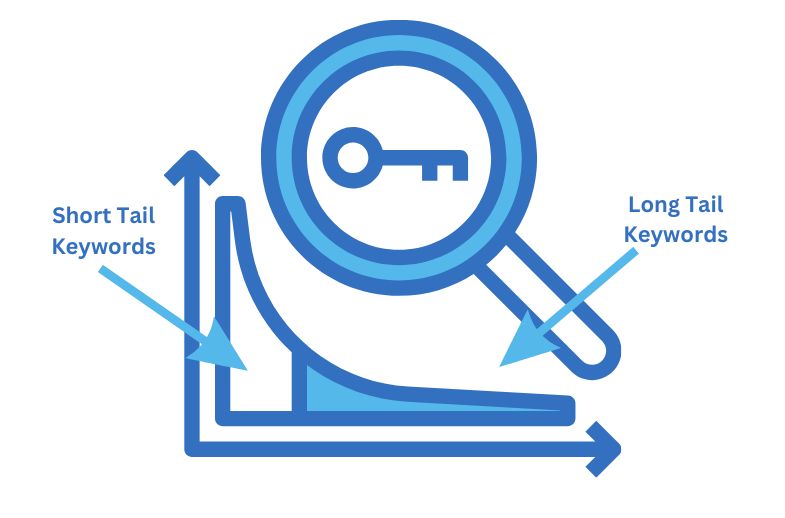Long Tail Keywords Vs Short Tail Keywords – What Should You Know

SEO experts often call them the lifeblood of search engines; yes, I am talking about keywords!
But when it comes to doing on-page SEO for your website, keywords are one of the biggest factors in determining the success or failure of your SEO campaign.
Here is what you should know about keywords to determine which keywords you should use on your personal blog or website. It helps you get massive visitors from search engines as well as appear at the top of Google SERPs.
You will need to do proper homework and keyword research before deciding which ones to go for, long tail Keywords Vs short tail keywords.
Let me explain long tail keywords vs short tail keywords first so you can choose the right one for your SEO strategy.
Keep reading!
What are Long Tail Keywords?
Long tail keywords are usually made with more than 3 words and they are undeniably a lot more targeted. “How to do SEO for website step by step ” is the perfect example of long tail keywords as its example for short tail stated in the above lines.

According to research, almost 70% and above of internet searches are made by using long tail keywords.
These are more expressive and enable you to target specific audiences or visitors.
As we know, these keywords are more specific, you will receive fewer visitors to your website as a result of SEO efforts by using the long tail keywords.
It is also true that long tail keywords bring real visitors to what you are offering or providing.
You can also check the ‘people also search for’ section to find relevant long-tail keywords.

Advantages of Long Tail Keywords
Increased Conversion Rates: Because long tail keywords precisely match the searcher’s purpose, they usually result in greater conversion rates.
Lower Competition: It’s simpler to rank higher in search results when fewer websites are vying for these keywords.
Targeted Traffic: Long tail keywords attract visitors who are more likely to have interest in your particular offerings. It improves conversion and boosts revenue.
What are Short Tail Keywords?
These are the keywords with 2 words or less. Let me explain by giving some easy-to-understand examples; “SEO Tips”, “Shopping List” and “Recipes” are some short tail keywords.
When you want to drive a large number of visitors to your blog, using short-tail keywords is the most effective way to do so.

But these are generally more competitive and harder to rank in search engines. But with a bit of hard work, it is possible to rank for these.
As a beginner, getting high ranks for short tail keywords is a difficult job for you as these are highly competitive with a larger volume of monthly searches.
The Advantages of Short Tail Keywords
High Visibility: Short tail keywords have a high search volume and can greatly improve the visibility of your website.
Wider Audience: These keywords attract a wider user base, which is advantageous for brand recognition.
Traffic Generation: Large e-commerce platforms and general information websites can benefit from the high volume of traffic. It is the short-tail keywords that can bring to their websites.
Long Tail Keywords Vs Short Tail Keywords – Which Should You Use?
After reading the first part of this writing about what you should know about keywords. Now, it’s time to decide which should you use in your SEO campaign to get high ranks in search engines and massive traffic as well.
Once you understand the relationship between the competition and conversion rates of short tail and long tail keywords correctly, I strongly recommend you use a combination of short tail and long tail keywords in your content to get maximum benefits.
By doing so, you can retain the visitors with a high intent to get something from you and also go up the ranks for short tail keywords in results.

When about to target long tail keywords, you have to create unique and high quality content with 300 words minimum. This is for each of your web pages because longer content enhances the opportunity to add up long tail keywords.
If some of your long tail keywords are appearing in top SERPs, then you should go for short tail keywords as they will improve your overall SEO for a blog or website by providing you more traffic and higher click-through rates to secure visible places in SERPs.
Tools for Finding Long Tail and Short Tail Keywords
Google Keyword Planner: It is a free tool that helps you find both short tail and long tail keywords and see how often they’re searched in a particular location.
Ahrefs: Ahrefs is a premium SEO tool that provides keyword ideas, search volume, and competition analysis to help you find the best keywords.
SEMrush: Another powerful SEO tool is SEMrush which offers features like keyword research, competitive analysis, and more.
We have also reviewed 5 Best Keyword Research Tools for SEO that you may find interesting to streamline your keyword research tasks.
Final Thoughts
Long tail and short tail keywords are two different concepts that must be considered to create an effective SEO strategy. Although the main advantages of short tail keywords are traffic and increased visibility,
Long tail keywords are essential to target the right audience and attain higher conversion possibilities. When using both types of keywords properly, they will help improve the site’s rank in the search engines, thus achieving the business goals.




